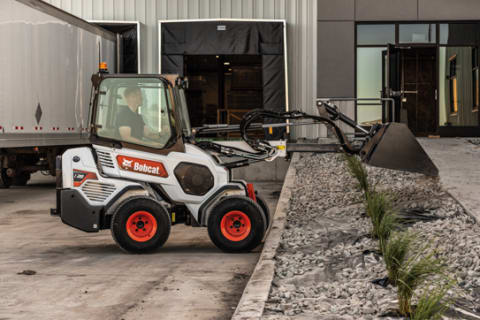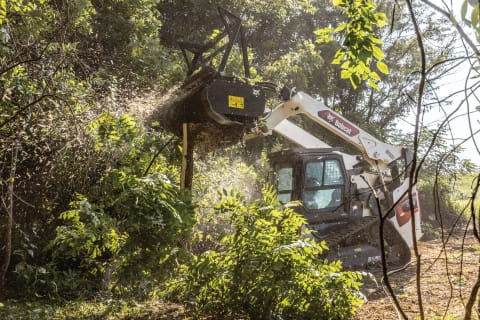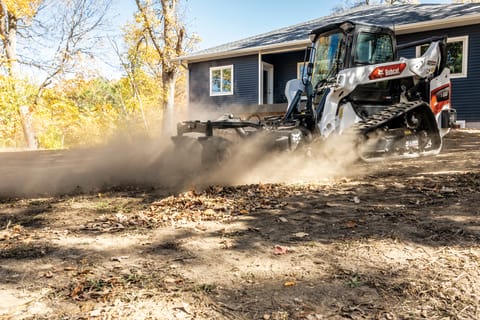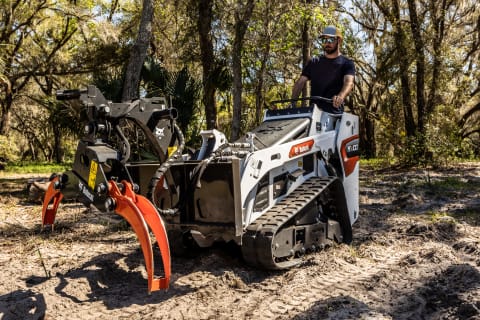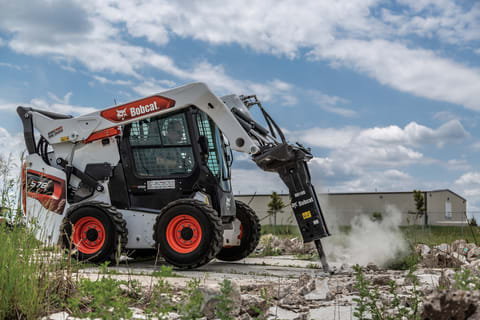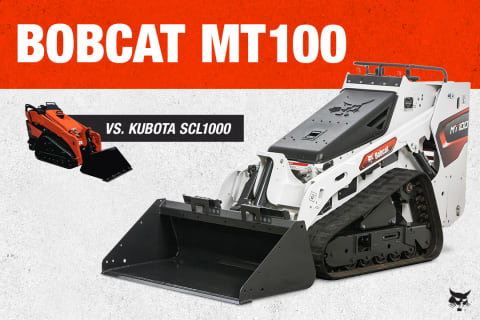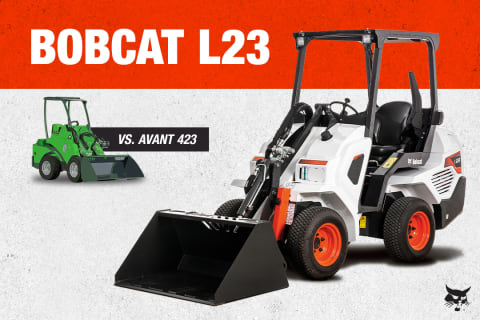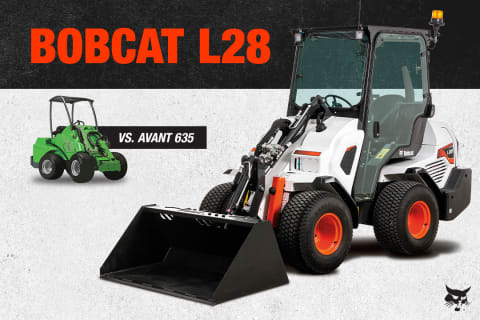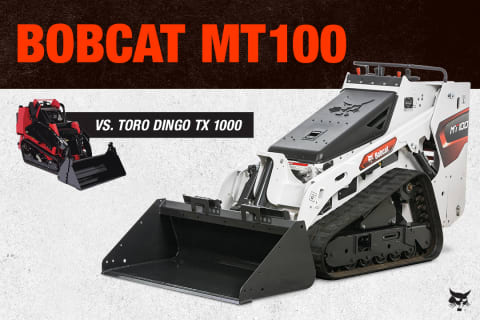- Home
- Buying Resources
- Loaders
- 4 Tips to Select the Right Loader Bucket for Your Compact Loader
Build Your Loader, Get a Free Price Quote
Customize your loader. Select the model, choose options, and submit to your local dealer for a free price quote.
Build & Quote4 Tips to Select the Right Loader Bucket for Your Compact Loader
Posted on August 22, 2021
Buckets are one of the most commonly used attachments for compact equipment, specifically compact track loaders and skid-steer loaders. But with so many types to choose from, how do you know which bucket is best suited for your application? Don’t leave your job to chance. Consider these tips to find the right fit for your fleet.
Summary
Before selecting a loader bucket, evaluate its weight and capacity. Then, consider the application the bucket will be used in, the density of your heaviest material, any needed bucket accessories and coupling system options for easy attachment changes. Choosing the right bucket can go a long way toward meeting your daily production goals.
Evaluate material density
Before performing tasks like loading, carrying and stockpiling, determine the best bucket size, weight and capacity for the job. Calculate the average density of the material you’ll be moving, and then compare that figure to the loaders’ tipping load and lifting capacity to ensure you can properly move the material.
If you are working with different types of materials, specify the bucket based on the heaviest material it will handle. Pushing a machine beyond these limits can accelerate wear, affect machine durability and significantly lower your return on investment.
Match loader bucket to material
Bucket choices for compact track loaders and skid-steer loaders are numerous, so it’s important that you understand the different loader bucket styles to best meet your needs.
Standard-duty loader buckets
The most common bucket is a standard-duty bucket for maximum filling and material retention. Standard-duty buckets are ideal for light-duty tasks, such as grading, leveling and day-to-day material handling. They offer good breakout force, especially when working on general aggregates in construction and municipal applications.
Heavy-duty loader buckets
For more abrasive applications, consider pairing your loader with a heavy-duty bucket. Typically, they are designed with high breakout forces and optimized capacities to make quick work of big tasks. Use heavy-duty buckets for grading, leveling, carrying, loading and material handling.
Severe-duty loader buckets
For extreme applications, including grading, leveling and material handling, use a severe-duty bucket. Thick mounting frames in severe-duty buckets are designed to withstand higher breakout forces. Bolt-on corner cutting edges protect bucket corners.
Light-material loader buckets
If you are looking to move larger loads with smaller densities, a light-material bucket may be an economical solution. Light-material buckets offer higher capacities than standard-duty buckets, making them ideal for lifting snow, mulch, fertilizer or other light materials. These buckets are often used in snow applications.
Specialty loader buckets
If your jobsite calls for a different bucket style and design, consider specialty buckets. Many compact equipment manufacturers make a variety of unique buckets, including rock and combination (or 4-in-1) buckets.
Rock buckets work well for handling rocks and debris in construction applications. This type of bucket features tines to easily separate materials while the soil sifts through.
Combination buckets are versatile attachments with multiple functions, including loading, grappling, dozing, leveling and digging.
For help making the best decision when selecting a bucket, visit your local dealer.
Get a Free Price Quote From Your Local Dealer
Find A DealerUse ground engaging tools
Cut through material more easily with ground engaging tools, such as bucket teeth. Many manufacturers offer a vast number of interchangeable bolt-on teeth options for specific buckets. Heavier-duty buckets, such as rock buckets, typically feature weld-on teeth to reduce wear.
Replaceable cutting edges and extra guarding, such as shanks, can be added to buckets to protect and promote overall productivity.
Quickly change buckets
There are times when an application calls for more than one bucket. Most manufacturers provide an attachment quick-change mechanism for easily changing loader buckets and other attachments.
While these systems can save you time, consider opting for a powered quick-attach mechanism for your loaders. These mechanisms provide many more efficiencies by allowing operators to rapidly change buckets or other non-hydraulic attachments from the comfort and security of a cab.
Selecting the right loader bucket can increase your productivity and reduce operating costs. Evaluate the bucket weight and capacity first, then select the bucket design that best matches your application.
If you are unsure about material weights or which bucket may be the best choice for your application, contact your local dealer for assistance.
Explore More Loader Resources
View All Articles- Small Articulated Loaders Productivity for Grounds Maintenance
Small Articulated Loaders Productivity for Grounds Maintenance
Learn about how versatile and powerful small articulated loaders increase productivity and their advantages for ground-maintenance and landscaping professions. - How Compact Loaders are Beneficial for Forestry Work
How Compact Loaders are Beneficial for Forestry Work
Learn how Bobcat compact track loaders and skid-steer loaders provide versatility with attachments and machine power to increase your productivity for forestry work. - Landscaping Attachments for Compact Loaders
Landscaping Attachments for Compact Loaders
Explore the top landscaping attachments for your compact loaders, like compact track loaders for versatile productivity and power on the job. - Top Attachments for Mini Track Loaders
Top Attachments for Mini Track Loaders
Discover the top attachments from the 24 available for the Bobcat Mini Track Loaders for job-specific landscaping, grounds maintenance and forestry challenges. - Bobcat Attachments for Concrete Work with Compact Loaders
Bobcat Attachments for Concrete Work with Compact Loaders
Learn why Bobcat loaders are the machines of choice for concrete contractors with the productivity increase of Bobcat attachments specifically for concrete work. - How to Choose Compact Track Loader Tracks
How to Choose Compact Track Loader Tracks
The right compact track loader tracks can improve your machine’s performance, minimize ground disturbance and extend your working season in wetter months. - Bobcat MT100 vs Kubota SCL1000
Bobcat MT100 vs Kubota SCL1000
Every feature and specification matters, to obtain maximum production and output from a mini track loader. Compare the Bobcat MT100 against the Kubota SCL 1000. - Bobcat L23 vs. Avant 423 Small Articulated Loaders
Bobcat L23 vs. Avant 423 Small Articulated Loaders
When choosing a small articulated loader, it can be overwhelming from the options. Explore this comparison of two popular options: the Bobcat L23 and Avant 423. - Bobcat L28 vs. Avant 635 Small Articulated Loader
Bobcat L28 vs. Avant 635 Small Articulated Loader
Small articulated loaders provide impressive lifting capabilities. When looking at the Bobcat L28 compared to the Avant 635, here are some factors to consider. - Bobcat MT100 vs. Toro Dingo TX 1000
Bobcat MT100 vs. Toro Dingo TX 1000
When choosing a mini track loader, it is important to examine key features and benefits. Explore how the Bobcat MT100 stacks up against the Toro Dingo TX 1000.
